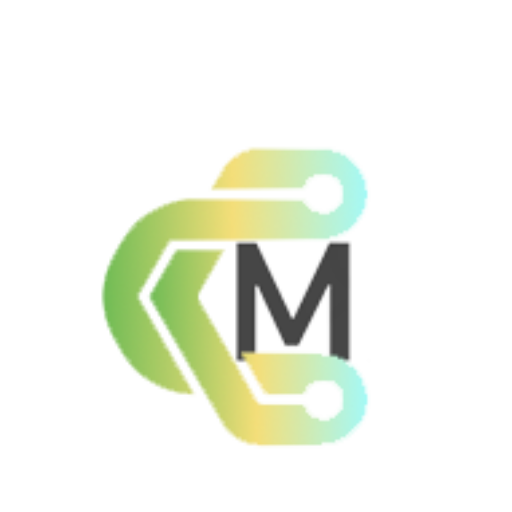Now Reading: Mastering NFT DAO Governance: A Guide
- 01
Mastering NFT DAO Governance: A Guide
Mastering NFT DAO Governance: A Guide
The digital world is evolving with community-driven systems that reshape how we manage assets. At the heart of this shift lies the fusion of unique digital tokens and decentralized organizational models. This guide unpacks how these innovations create transparent frameworks for collective decision-making.

Traditional management structures often lack flexibility in fast-paced digital environments. New systems powered by blockchain enable real-time collaboration, letting communities vote on asset use and distribution. These models prioritize participation over hierarchy, creating fairer ecosystems.
You’ll discover practical steps to engage with these platforms effectively. From setting up smart contracts to navigating legal gray areas, this resource simplifies complex concepts. Real-world examples show how diverse groups manage shared ownership without centralized control.
Blockchain’s role extends beyond transactions—it establishes trust through immutable records. Every proposal, vote, and outcome becomes permanently visible. This transparency reduces conflicts and aligns community interests with long-term goals.
Key Takeaways
- Community-led systems replace traditional hierarchies in digital asset management
- Blockchain ensures transparency in proposal voting and execution
- Smart contracts automate decentralized decision-making processes
- Legal considerations vary by jurisdiction for digital collectible ownership
- Active participation requires understanding token-based voting rights
- Successful ecosystems balance technical design with member incentives
Introduction to NFT DAO Governance
Modern digital landscapes are witnessing a transformation where power shifts from centralized entities to collaborative communities. This evolution reimagines how groups manage digital assets through transparent frameworks built on shared ownership principles.
Defining the Digital Ecosystem
Today’s online environments prioritize user-driven operations over corporate control. Unlike traditional systems, these spaces let participants shape rules, manage resources, and vote on upgrades. Blockchain technology enables this shift by recording decisions immutably, ensuring accountability.
Key features of this ecosystem include:
- Direct influence over platform policies and asset distribution
- Automated systems replacing middlemen in transactions
- Transparent tracking of proposals and outcomes
Purpose and Vision for the Ultimate Guide
This resource clarifies how decentralized models empower users in the digital economy. It breaks down technical concepts into actionable insights, helping readers navigate platforms where communities steer development. You’ll learn to leverage tools that distribute authority fairly while maintaining operational efficiency.
The guide bridges knowledge gaps for those exploring collaborative ownership structures. By focusing on real-world applications, it demonstrates how shared governance creates sustainable value in fast-evolving markets.
Decentralized Autonomous Organizations Uncovered
Organizational structures are undergoing radical transformation as technology enables new collaboration methods. These systems blend collective oversight with automated protocols, creating frameworks where members shape outcomes directly.
History and Evolution of DAOs
The concept of autonomous organizations emerged in the 1990s but gained traction after blockchain technology enabled practical applications. Early experiments began around 2013, with systems allowing groups to manage resources through code-based rules. A pivotal moment arrived in 2016 when a venture-focused project raised $70 million through digital tokens, only to lose $50 million weeks later to security flaws.
This incident highlighted critical lessons:
- Distributed systems require robust technical foundations
- Community participation demands clear incentive structures
- Security protocols must evolve alongside organizational complexity
Understanding Community Governance
Modern decentralized autonomous organization models use token-based voting to align member interests. Participants influence decisions proportional to their stake, creating fluid hierarchies. These systems replace top-down control with transparent proposal systems recorded on blockchain ledgers.
Three core principles drive success:
- Open participation frameworks
- Automated execution of approved decisions
- Continuous adaptation through member feedback
The Role of Smart Contracts in DAO Ecosystems
Digital agreements are rewriting how groups collaborate and enforce rules. These coded protocols act as impartial referees, executing actions only when conditions align with community standards. By embedding logic into blockchain records, they create systems where trust emerges from code rather than centralized authorities.
Automating Trust and Transparency
Smart contracts cut out middlemen by turning agreements into self-operating programs. When two parties meet predefined terms—like reaching a voting threshold—the technology triggers payments, unlocks assets, or updates records automatically. Every step remains visible on public ledgers, letting participants verify actions without blind faith in leaders.
This approach slashes delays and costs tied to manual oversight. For example, smart contracts in DAO development can manage treasury distributions instantly after successful proposals. Members see real-time updates, reducing disputes over execution.
Ensuring Security in Decentralized Systems
Blockchain’s unchangeable nature makes these contracts tamper-proof once deployed. Advanced setups use multi-step approvals and time delays to prevent hacks. Security audits and bug bounties further strengthen systems against exploits.
Three layers protect decentralized networks:
- Encrypted transaction records
- Automatic code execution
- Community-driven protocol upgrades
This combination allows flexible operations while maintaining ironclad reliability. As technology evolves, these tools empower communities to manage complex tasks with precision.
NFT DAO governance: Key Strategies for Success
Communities thrive when participation aligns with clear technical frameworks. Effective systems balance member influence with structured protocols to maintain fairness and momentum. Below, we explore practical approaches to designing collaborative ecosystems.

Implementing Governance Tokens
Governance tokens act as keys to community decision-making. Distributing them requires strategies that reward active contributors while preventing power concentration. Many platforms combine initial airdrops with ongoing rewards for participation, creating diverse ownership.
Successful projects often use tiered systems. Long-term holders gain incremental voting weight, while contributors earn tokens through tasks like proposal drafting. This approach balances loyalty with fresh perspectives. For example, some ecosystems let members earn rewards by improving platform features.
Voting Mechanisms and Decision-Making
Voting systems must encourage informed choices without excluding smaller stakeholders. Time-limited polls with discussion phases help members evaluate proposals thoroughly. Thresholds ensure decisions reflect majority interests while protecting against rushed changes.
Advanced models use delegated voting or quadratic formulas. These methods reduce whale dominance by weighting votes based on participation duration or spreading influence across multiple choices. Real-time dashboards track proposal impacts, letting communities adjust strategies as they grow.
Deep Dive into DAO-Enabled NFT Platforms
Creative collaboration finds new expression through systems that blend collective oversight with technical innovation. These platforms empower artists and collectors to co-create value while maintaining transparent operations. Built-in tools streamline complex processes, making decentralized creation accessible to diverse participants.
Core Components and Functionality
Robust technical frameworks form the backbone of these ecosystems. Automated agreements handle asset creation, while voting systems let communities shape policies. Integrated marketplaces and fund management tools complete the package, enabling end-to-end operations.
Key elements include:
- Self-executing contracts for instant royalty payments
- Proposal review systems requiring member approval
- Shared ownership models using fractional tokens
Minting and Managing Digital Assets
Creators launch projects through streamlined interfaces that guide them from concept to launch. Each submission undergoes peer evaluation before becoming part of official collections. This quality control maintains standards while respecting community preferences.
Advanced features allow groups to acquire high-value items collectively. Ownership splits into tradable tokens, letting participants benefit from appreciation. Automatic payment splits ensure fair compensation across resales, with verification systems protecting creator rights.
These platforms connect to major marketplaces and social networks, expanding reach. Simplified interfaces hide technical complexity, letting users focus on creation and collaboration. Continuous upgrades reflect member feedback, keeping systems aligned with evolving needs.
Voting Mechanism Innovations in DAOs
Decision-making processes are being reimagined through token-based systems that distribute influence fairly. These frameworks let participants shape platform evolution while guarding against centralized control. Modern solutions balance member input with operational efficiency through mathematical models.

Token-Based Voting Explained
Digital tokens serve as participation passports in collaborative networks. Each token represents voting power, letting members weigh in on proposals proportionally. Systems often reward long-term engagement through time-locked boosts, encouraging sustained involvement.
Three core principles define successful models:
- Clear correlation between contribution and decision rights
- Protections against sudden power grabs
- Transparent tracking of voting histories
Exploring Quadratic and Delegated Voting Methods
Quadratic systems let voters express preference intensity by allocating multiple votes to priorities. A cost curve makes each additional vote more expensive, preventing domination by large holders. This approach values diverse perspectives over pure financial stakes.
Delegated models enable efficiency through expertise sharing. Members can assign voting rights to trusted specialists in specific areas like:
- Technical infrastructure decisions
- Community fund allocations
- Partnership evaluations
Hybrid systems combine these methods, offering context-sensitive voting for different proposal types. Time-based conviction mechanisms add nuance, where voting power grows with sustained interest in specific issues. These innovations create adaptable frameworks that scale with community needs.
Community Engagement and Ownership Models
Collaborative ecosystems thrive when value creation becomes a shared mission. Members gain influence through participation in curated projects like virtual exhibitions and marketplace design. These initiatives let users shape platform evolution while earning tangible benefits from collective success.
Incentives for Active Participation
Ownership models reward contributors through multiple channels. Financial perks like royalty splits mix with social recognition systems to motivate sustained involvement. Example structures include:
- Revenue-sharing pools for top-curated collections
- Exclusive access to limited-edition digital items
- Reputation points unlocking governance privileges
Platforms often allocate voting rights based on contribution history. Long-term members earn higher influence through consistent engagement. This approach prevents short-term speculation while aligning interests with ecosystem growth.
Collective Decision-Making Dynamics
Balancing individual voices requires structured collaboration tools. Many communities use:
- Proposal forums with mandatory discussion periods
- Automated consensus thresholds for policy changes
- Real-time impact simulations before final votes
Shared ownership extends to intellectual property rights in some systems. When users co-create assets, smart contracts automatically track usage permissions and revenue splits. This transparency builds trust and reduces conflicts over creative direction.
Evaluating Legal Status and Compliance Challenges
Legal recognition remains a critical barrier for collaborative digital ventures. As decentralized models gain traction, regulators struggle to categorize entities that operate without traditional hierarchies. This ambiguity creates operational risks for participants and developers alike.

Regulatory Uncertainty in the U.S. Market
Wyoming’s 2021 legal status recognition for decentralized entities marked a watershed moment. The law provides liability protections while requiring transparency in operations. However, federal agencies like the SEC continue scrutinizing token distributions as potential unregistered securities.
Three key challenges persist:
- Varying definitions of digital assets across state lines
- Unclear tax obligations for token-based rewards
- Enforcement actions targeting fundraising methods
Legal Structures for Decentralized Entities
Choosing appropriate business structures requires balancing innovation with compliance. Many platforms adopt Wyoming’s model while incorporating:
- Multi-signature treasury controls
- Automated tax reporting tools
- KYC/AML verification layers
International organizations face added complexity when operating across jurisdictions. Some use hybrid models combining limited liability companies with token-based membership systems. Legal experts recommend periodic compliance audits as regulations evolve.
The Impact of Blockchain Technology on NFT Markets
Distributed ledger systems are reshaping how digital assets move through global networks. By cutting out middlemen, blockchain technology creates direct value exchange channels. This shift impacts everything from pricing models to ownership verification in specialized markets.
Decentralization and Market Transparency
Blockchain turns opaque processes into open books. Every transaction gets time-stamped and stored across thousands of computers. Buyers see full histories of digital items, building confidence in authenticity.
Traditional markets rely on brokers to verify deals. Blockchain automates this through code, slashing fees. Shared records eliminate duplicate paperwork, letting buyers and sellers interact peer-to-peer. These changes create leaner, faster-moving ecosystems.
Smart Contract Vulnerabilities and Solutions
While automated agreements reduce human error, they carry risks. Flaws in contract code can lock funds or enable exploits. Leading platforms now use multi-stage audits before deploying agreements.
Security upgrades include:
- Time-delayed changes to critical functions
- Bug bounty programs rewarding ethical hackers
- Backup systems freezing suspicious transactions
These measures help maintain trust as blockchain technology matures. Continuous monitoring tools alert communities to unusual activity, creating safer markets for all participants.
FAQ
How do decentralized autonomous organizations ensure transparent decision-making?
These systems rely on blockchain-based voting mechanisms and publicly auditable smart contracts. Token holders propose or vote on initiatives, with results recorded immutably, fostering accountability across all transactions.
What role do governance tokens play in community-led platforms?
Governance tokens grant voting rights, allowing holders to influence platform upgrades, fund allocation, and policy changes. Projects like Uniswap and MakerDAO use them to decentralize control while aligning incentives among participants.
Are there legal risks for decentralized entities operating in the U.S.?
Regulatory uncertainty persists, as agencies like the SEC evaluate whether certain tokens qualify as securities. Some projects adopt Wyoming’s DAO LLC framework to clarify liability and compliance, though standards remain fragmented.
How do quadratic voting methods improve fairness in digital ecosystems?
This approach weights votes based on participant stake, reducing dominance by large token holders. It encourages broader input, as seen in Gitcoin’s grant funding model, balancing individual influence with collective priorities.
Can smart contracts fully eliminate security risks in decentralized systems?
While automated agreements reduce human error, code vulnerabilities—like those exploited in the Poly Network hack—require rigorous audits. Platforms such as OpenZeppelin provide standardized tools to mitigate exploits in blockchain-based operations.
What incentives drive user participation in collective ownership models?
Members earn rewards through token distributions, revenue-sharing, or exclusive access to assets. For example, Flamingo DAO offers fractionalized art ownership, tying engagement directly to financial and creative benefits.
How does blockchain technology enhance transparency in digital art markets?
Public ledgers track provenance and royalty distribution, reducing fraud. Platforms like SuperRare embed creator royalties into smart contracts, ensuring artists profit automatically from secondary sales.














